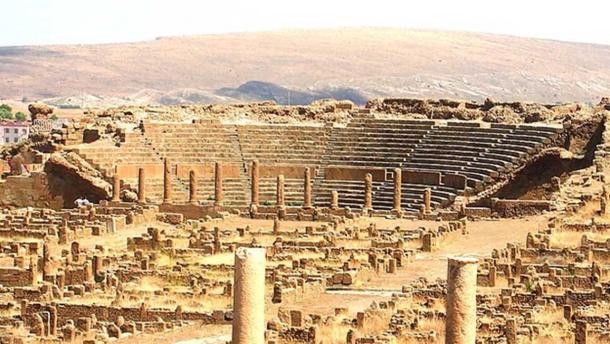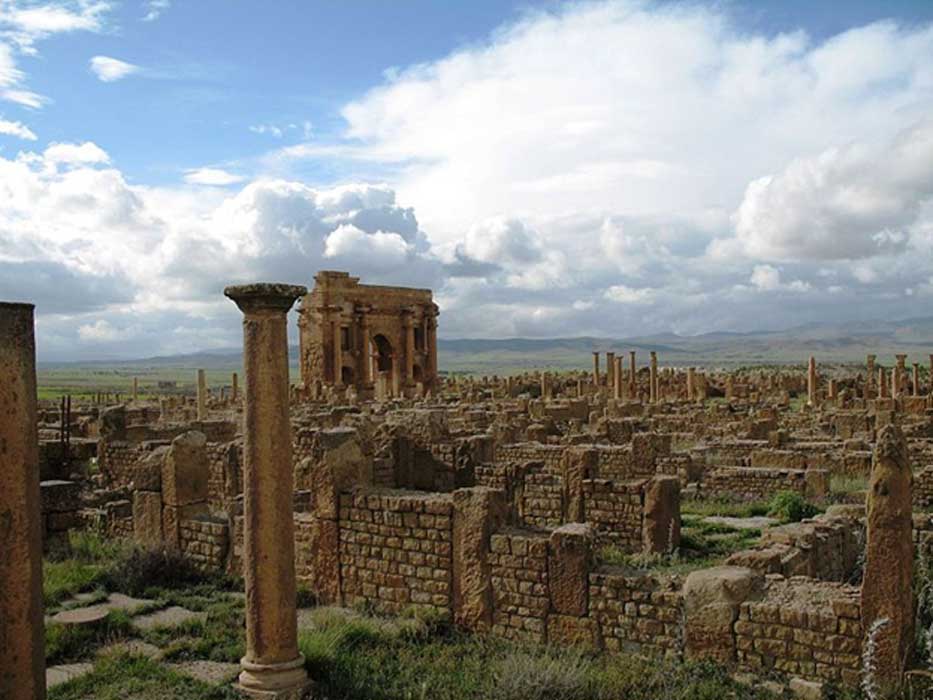Timgad: The Wonderfully Preserved Algerian Pompeii
One of the best-preserved Roman ruins in Algeria, Timgad can thank the sands of the Sahara for its survival. It is such a remarkable site to behold that some travelers have even gone so far as to dub it the ‘Algerian Pompeii’.
A Prime Example of Roman Urban Planning
Timgad (known also as Thamugadi) was a Roman military colony located in the Aures Mountains, in northeastern Algeria. The full name of Timgad was Colonia Marciana Ulpia Traiana Thamugadi. The city was founded by Emperor Trajan around 100 AD, and its name was meant to commemorate his mother (Marcia), his eldest sister (Ulpia Marciana), and his father (Marcus Ulpius Traianus). Timgad was probably first created as an encampment for the Legio III Augusta (3rd Augustan Legion).

The ruins of Timgad. (Dan Sloan/CC BY SA 2.0)
Timgad was built ex nihilio, which literally means ‘out of nothing’. Due to this, Timgad is one of the finest examples of Roman urban planning at its best. The city’s plan was designed as a perfect square, bisected by two main streets that were perpendicular to each other. The street that ran from north to south is known as the cardo, whereas the east-west oriented street is known as the decumanus. However the cardo does not run the whole length of the city, only to its center, where the forum was once located.
- Beni Hammad Fort: Ruins Attest the Dreams of a Medieval Algerian Islamic Dynasty
- The Giant of Algeria: Iconographic Evidence of Roman Expeditions in the Sahara
- Jean Eugene Robert-Houdin, The Father of Modern Magic Who Stopped a Revolt with His Abilities
Trajan’s Arch and Other Highlights of Timgad’s Architecture
Timgad was a walled settlement, and was accessed from one of its four gates, one for each cardinal direction. On the western side of the old city, the gate was replaced by a triumphal arch, Trajan’s Arch, when the urban area spread beyond its original limits. Trajan’s Arch stands at the end of the decumanus connecting the old and new areas, and is often regarded as one of the city’s most impressive structural remains. The road leading from the arch to the new area of Timgad is decorated with columns, and its central section was designed specifically for the use of chariots, whilst pedestrians walked on either side of it.

Roman Arch of Trajan at Thamugadi (Timgad), Algeria - late 1800s. (Public Domain)
Timgad also possessed the various structures that characterized a Roman settlement. For instance, at the center of Timgad is the forum, which was a public square whose primary purpose was as a place for the selling of goods. Additionally, the forum was used as a place for various social gatherings.
To the south of Timgad’s forum was the city’s theater, which was the place where public performances were held. The theater was built during the 160s, and was formed by cutting into a side of a hill. Although Timgad’s theater is comparatively smaller than most others in the Roman Empire, about 3500 people could still be seated in it at any given time.

The Ancient Roman theater in Timgad. (Zinou2go/CC BY SA 3.0)
Yet another feature of Roman urban planning is its baths. At Timgad, the remains of as many as 14 baths have survived. One of these is located on the northern end of the city’s cardo. These baths were on the left side of the cardo as one entered the city’s gates, and would have been used by weary travelers entering the city from that direction.
- The Royal Mausoleum of Mauretania: Deadly Wasps Once Prevented its Destruction
- The Monumental Tomb of Queen Tin Hinan, Ancient Ancestress of the Tuaregs
- The Rich Mythology and Megalithic Culture of the Ancient Berbers, Lords of the Desert

Reproduction of a mosaic of Timgad from a men's baths "Bene Lava" in Algeria, by Reda Kerbouche. (Reda Kerbouche/CC BY SA 4.0)
The End of Timgad’s History
Some of Timgad’s domestic structures (about a hundred or so houses) have also been excavated by archaeologists over the decades. These have yielded much information about the life that the inhabitants of Timgad had during Roman times. One of the most interesting of these is perhaps the house next to the baths on the northern end of the cardo. The archaeologists excavating there have found evidence that the house was converted into a Christian chapel at a later date.
Timad was destroyed towards the end of the 5th century by indigenous tribes from the Aurès Mountains. Although the Byzantines managed to revive some activity in the city during the 6th century following its re-conquest, Timgad was finally abandoned after the 8th century, following the Arab invasion.
Top image: The ruins of Timgad. Source: PhR61/CC BY 2.0
By Wu Mingren
References
Lonely Planet, 2018. Timgad. [Online]
Available at: https://www.lonelyplanet.com/algeria/attractions/timgad/a/poi-sig/1108382/355084
Ngugi, F., 2018. Why Algerian Timgad Roman Ruins remain rendezvous point for historians. [Online]
Available at: https://face2faceafrica.com/article/algerian-timgad-roman-ruins-remain-rendezvous-point-historians
The Editors of Encyclopaedia Britannica, 2016. Thamugadi. [Online]
Available at: https://www.britannica.com/place/Thamugadi
UNESCO, 2018. Timgad. [Online]
Available at: https://whc.unesco.org/en/list/194
www.romeartlover.it, 2018. Thamugadi (Timgad): The Old Town. [Online]
Available at: https://www.romeartlover.it/Timgad.html




















Comments
“Timad was destroyed towards the end of the 5th century by indigenous tribes from the Aurès Mountains."
Hmmm, how did they knock down all those massive stone blocks? And it was not written about?
Nobody gets paid to tell the truth.